Transylvania: Romania’s Baveria is a beautiful medieval tapestry that is more than Dracula

(This is part of a series of blogs on Moldova, Romania and Transnistria.)
BRASOV, Romania – The morning fog hung over the surrounding foothills of the Carpathian Mountains as we walked the nearly empty cobblestone pedestrian street for our delicious morning pastry. Through the mist we could still see specks of the fall colors in the beech and oak tree forest. Golds. Reds. Oranges.
We walked past tall, pointy steepled churches. Old women puttered in and out the doors, their wool overcoats buttoned tight against the chill. Entering the massive square, the buildings’ gumdrop colors still shined bright, like a coral reef deep in the ocean.
Behind us, a gondola stretched 2,000 feet to a radio tower near the “B-R-A-S-O-V” sign as big as the one over Hollywood. We sat in La Vatra Ardealului, a toasty, old world cafe with brass railings and leather chairs, eating rulada cu zmeura, a pastry roll filled with raspberries and cream and topped with chocolate sprinkles and more cream.
Welcome to Transylvania.
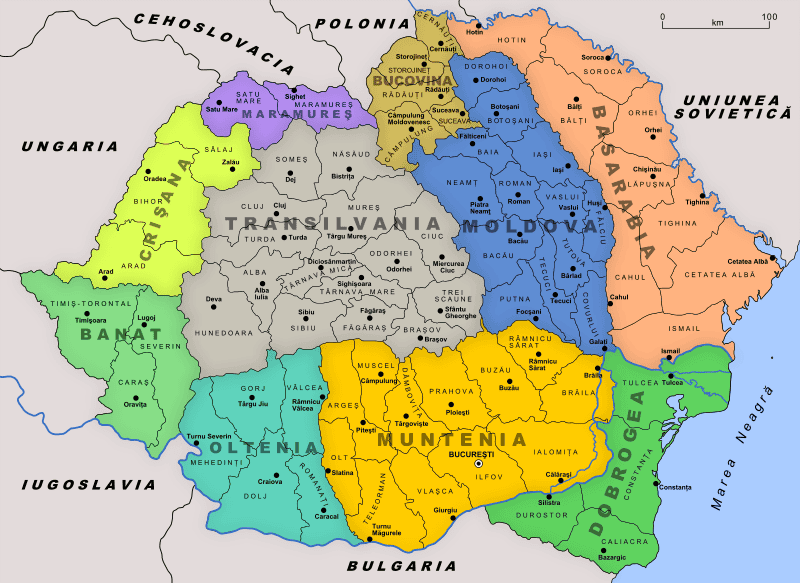
This is my lasting image of one of the most famous regions in the world. After nine days in Romania last month, I won’t remember Transylvania for Bran Castle and Dracula keychains. It’ll be of spectacular architecture, rich food, underrated wine and lovely fall foliage. (Sylva comes from the Latin word for “woods.”) It may not be New England in October but it sure added color to the gray image of one of the most oppressive communist countries behind the old Iron Curtain.

Shelve your thoughts of vampires, blood and horror movies you watched stoned at 2 in the morning. Transylvania is more accurately known as the Bavaria of Romania. From the architecture to the cuisine to the economics, this region of 6.5 million people, a third of Romania’s population, reminded me of Munich and Vienna – with a dash of the former East Berlin.
About the size of Iceland, Transylvania is rich in natural resources, history and income. It boasts four UNESCO World Heritage Sites, a GDP per capita of $28,574 and reserves of iron, lead, gold, copper and natural gas. We passed cattle and sheep farms. Vineyards produced some wine that rivaled what I tasted earlier in its more famous wine-producing neighbor, Moldova.
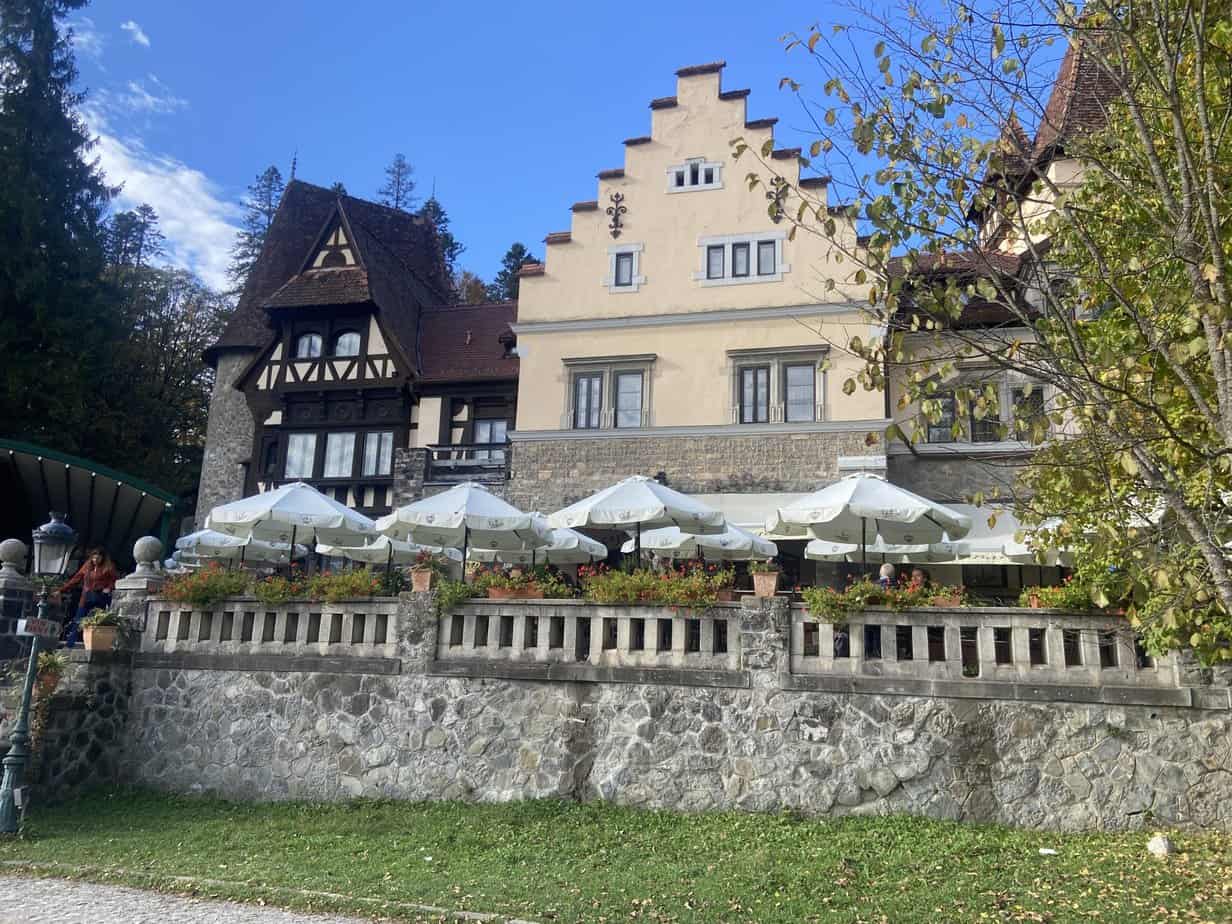
Getting there
Visiting Transylvania is easy. It was a straight two-hour shot north from Bucharest in a van as part of our Two Castles in One Day tour. Once past the gray, communist-era architecture of Bucharest’s suburbs and the oil fields and flat lands of northern Muntenia, Bucharest’s region, we went right into the teeth of the Carpathian foothills.
Carved out of the forest is the town of Salaia. We stopped for the 19th century Peles Castle, built by King Carol I and more beautiful than Bran if not nearly as famous. What impressed me more was the town: expensive A-framed houses and tony hotels where people sat outside sipping coffee on narrow streets curving up into the hills.
I imagined this place in two months, when skiers scurry off to ski lifts and huddle in cozy bars as the sun sets and so does the cold. It would look like Vail with better brandy.
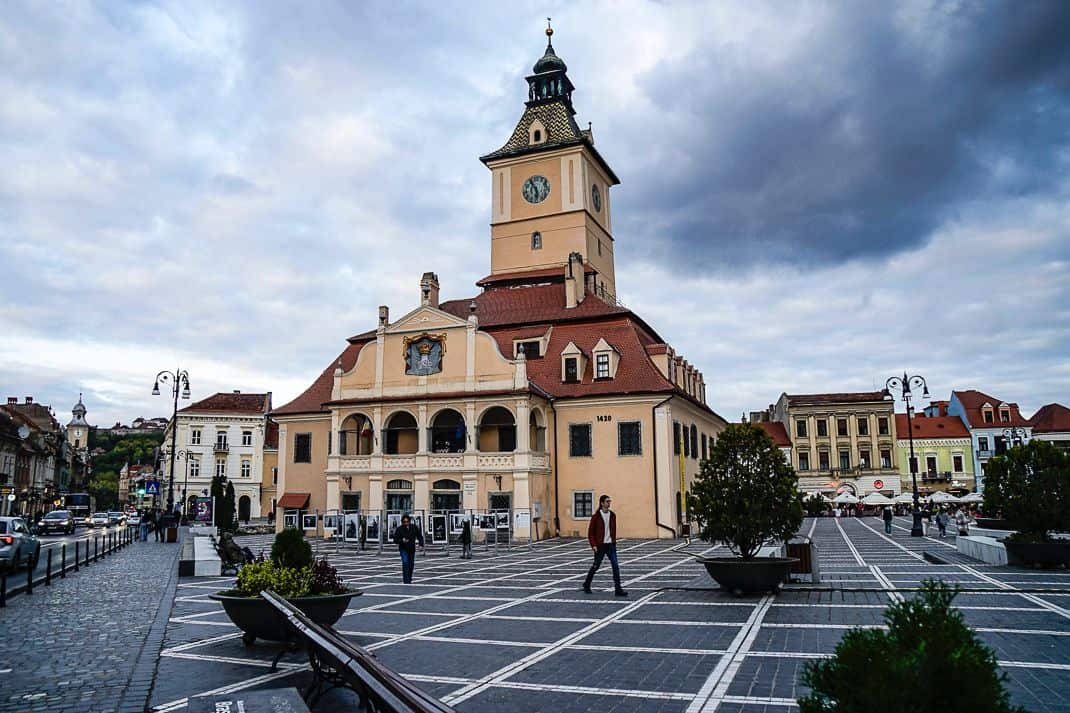
Brasov
After we survived the massive tourist trap that is Bran Castle, the van drove 16 miles (28 kilometers) north to Brasov, the prettiest town in Romania. We stayed four nights in a hotel on a pedestrian street that spoke off from Piata Sfatului, the huge main square that wouldn’t take a back seat to many piazzas in Italy.
In the middle of the square the giant triangle building, the Council House, is where the town’s government has met since 1420 and where trumpeters toot their horns from the watchtower every night at 6. Cafes and restaurants surround the square which is a lively host of musicians of varied skill levels.
It is said the Pied Piper of Hamelin – yes, that Pied Piper – paraded through this square, his gaggle of boys trailing behind.
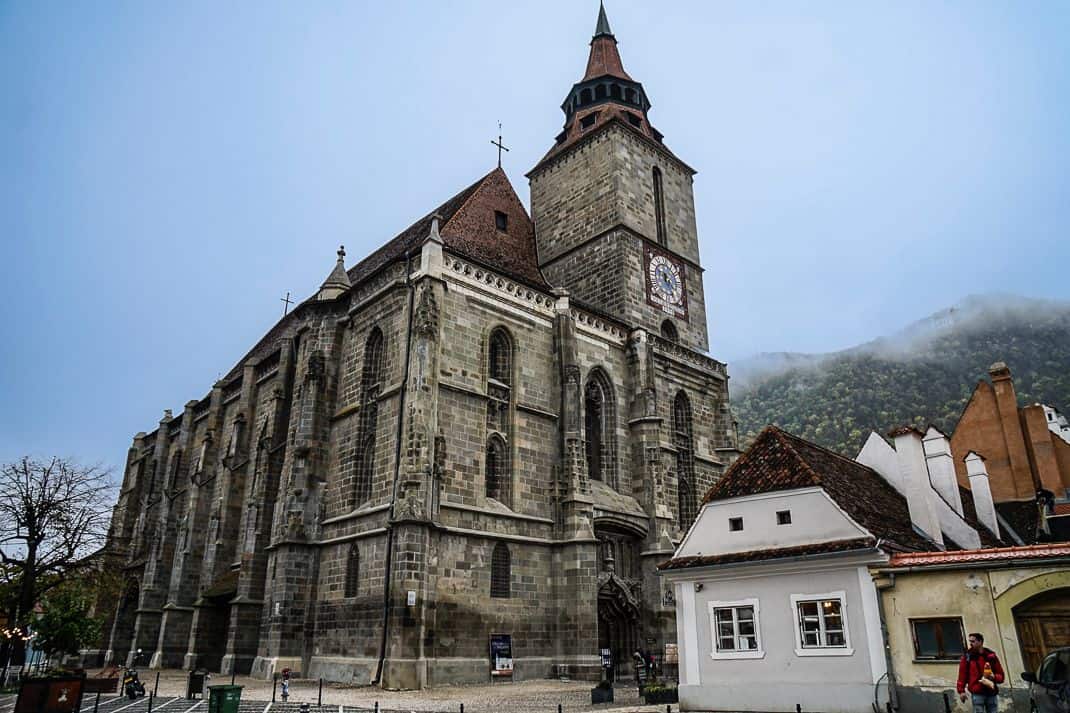
Brasov is a great town to wander. Despite a population of 238,000, there isn’t much traffic. And no traffic is allowed in and around much of Piata Sfatului. Dominating the landscape is a giant black Gothic church called, coincidentally, the Black Church.
Built in the 14th century, it didn’t get its name from some mysterious dark magic of which Romanians are oddly obsessed. The reason is more mundane. It is what the church, originally called St. Mary’s, became after what locals call the Great Fire of 1689. Sixteenth century Anatolian rugs, from Brasov’s days under Ottoman control, drape the interior, greatly helping the acoustics.

The church carries 600 years of history. Inside I saw bullet holes left from the Dec. 23, 1989 national revolution against the Communist government which two days later led to the arrest and execution of prime minister Nicolae Ciausescu.
The church has one of the strangest oddities I’ve ever seen on a church. Hanging over the roof is a statue of a small child, as if he’s looking down at the street below. Legend has it that he was a bit of a prodigy and became quite good at construction. He was so good he criticized one of the workers for his work on the roof.
The worker answered by throwing him to his death. The guilt-ridden worker confessed and was consequently sent to his own death.
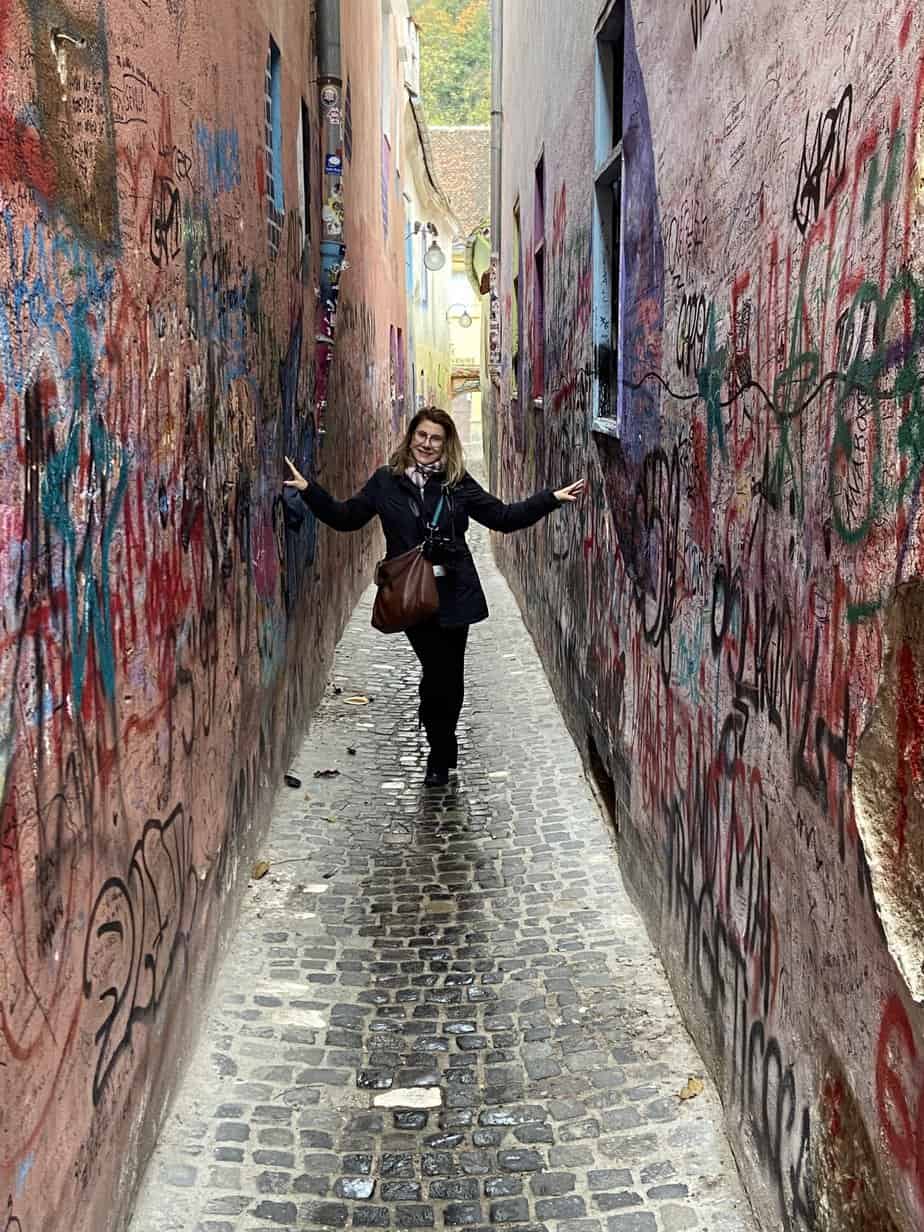
On the other side of the church where we finally saw cars is what is billed as the narrowest street in Europe. Strada Sforii (Rope Street) is 80 meters long – and one meter wide. Apparently, Vlad Tepes, aka Vlad the Impaler, aka Count Dracula, stole a kiss from his future wife here. Modern lovers do the same, presumably without drawing blood.
Every night we went across our narrow cobblestone street to Bodega Wine Bar. Here learned waiters and a visiting sommelier gave us a little education on Romania’s underrated wine scene. Eight-foot wine racks and high chairs and tables decorated the intimate enoteca, split into two rooms.

I fell in love with Romania’s main grape, the Feteasca Neagra. It’s a deep purple, almost black, grape indigenous to eastern Romania. It made for a luscious blend with Cabernet Sauvignon. The Sauvignon Blanc from Budureasca winery was also fabulous. I checked the retail price.
Five euros. I love Eastern Europe.
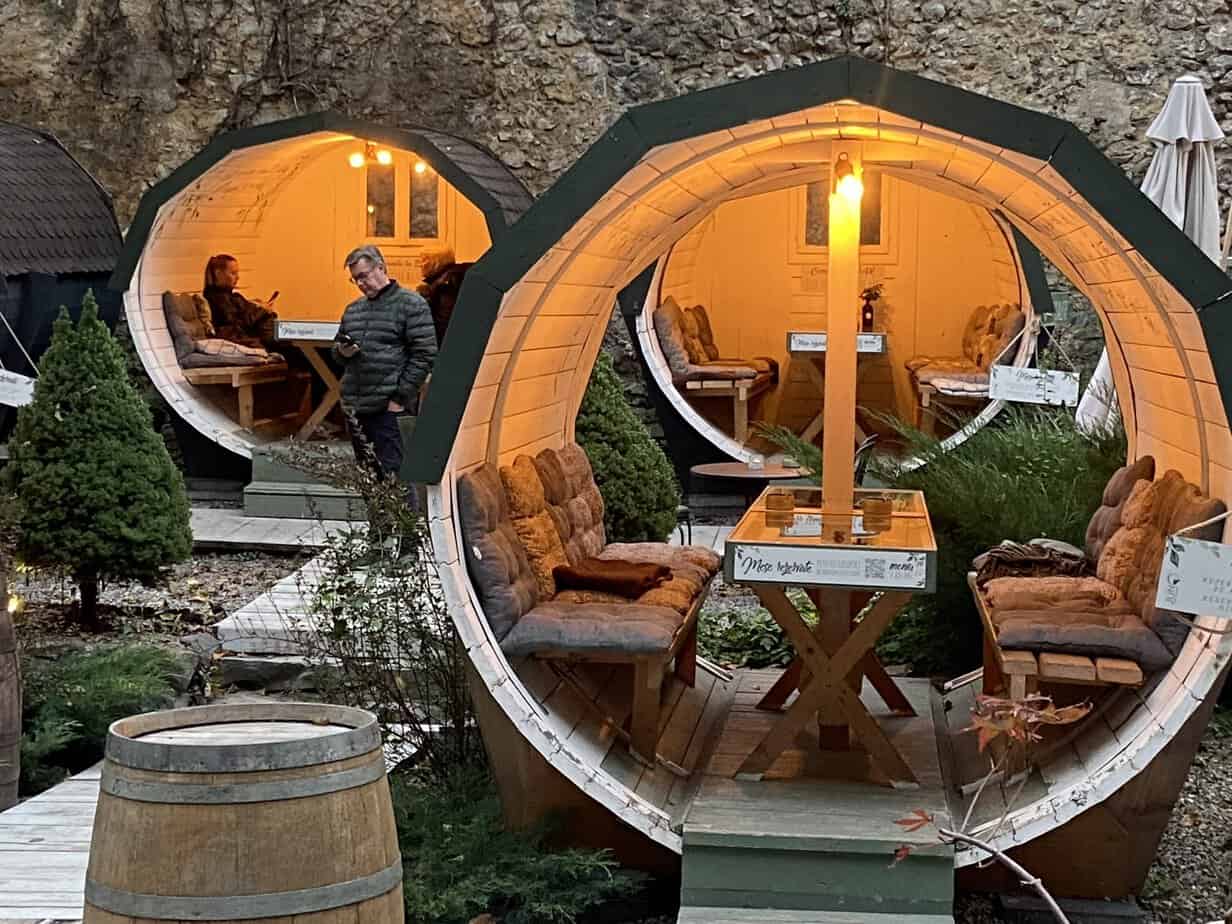
Later we discovered one of the most intimate wine bars I’ve seen. June Wine Garden sits just inside the wall that was built to protect Brasov from invaders in the Middle Ages. In the enoteca, people sit on leather couches in little, intimate enclosures shaped like giant hallowed-out wine barrels.
One warning, men. Your lady may not like Romanian cuisine. It’s a lot of comfort food: thick soups, sausage, beef. And few women will risk their image by ordering what I ordered at La Ceaun, a simple restaurant with a vaulted brick ceiling and packed with locals.
But anyone visiting Brasov must try its signature smoked pork knuckle. Yes, it’s a foot. A pig’s foot. But the pork is so superbly and patiently roasted, it came off with the scrape of a fork. Dipped in fresh horseradish sauce, it was a dish you had to taste to erase the image that you were eating a pig’s appendage.
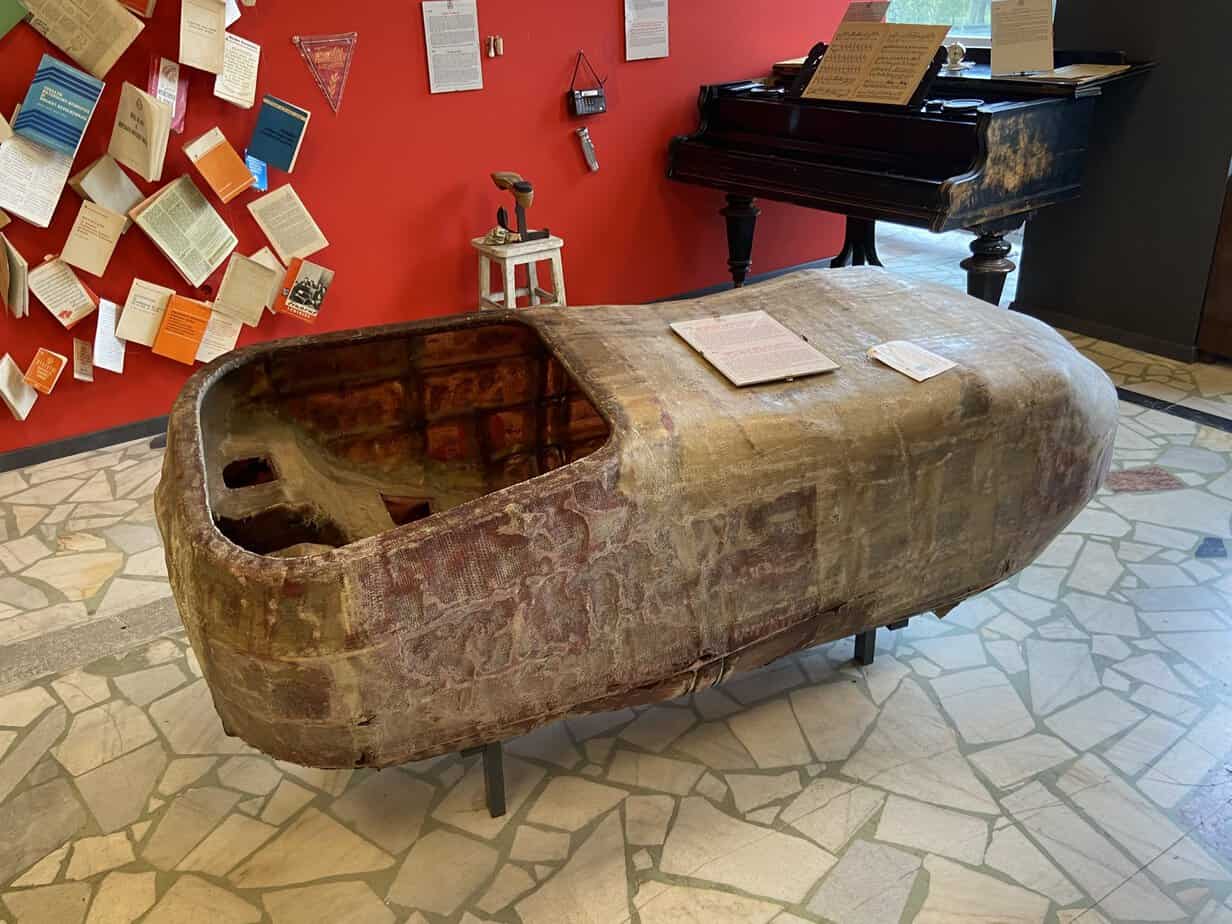
Transylvania history
Sitting at the crossroads of so many cultures throughout history, Transylvania has been conquered by half the planet. It has been the paddling boy of everyone from the Dacias to the Romans to the Goths to the Huns, some tribe called the Gepids, another called the Avars, then the Slavs, the Bulgars, the Magyars, the Tartars, the Ottomans and the Saxons. I think Transylvania also lost to Manchester United.
But no day in recent Transylvania history was bigger than Dec. 23, 1989. That’s when all corners of Romania rose up against Ceausescu and forged its escape from communism after he ran the economy into the dirt in the ‘80s.
To never forget, Brasov has a terrific, little museum called Tales of Communism. Inside are flashbacks to its communist world. Opened in 2022, the museum has a sample communist-era kitchen with a tiny stove that looks like something from a dollhouse. There’s a child’s bedroom with a single bed and a crude, wooden desk.
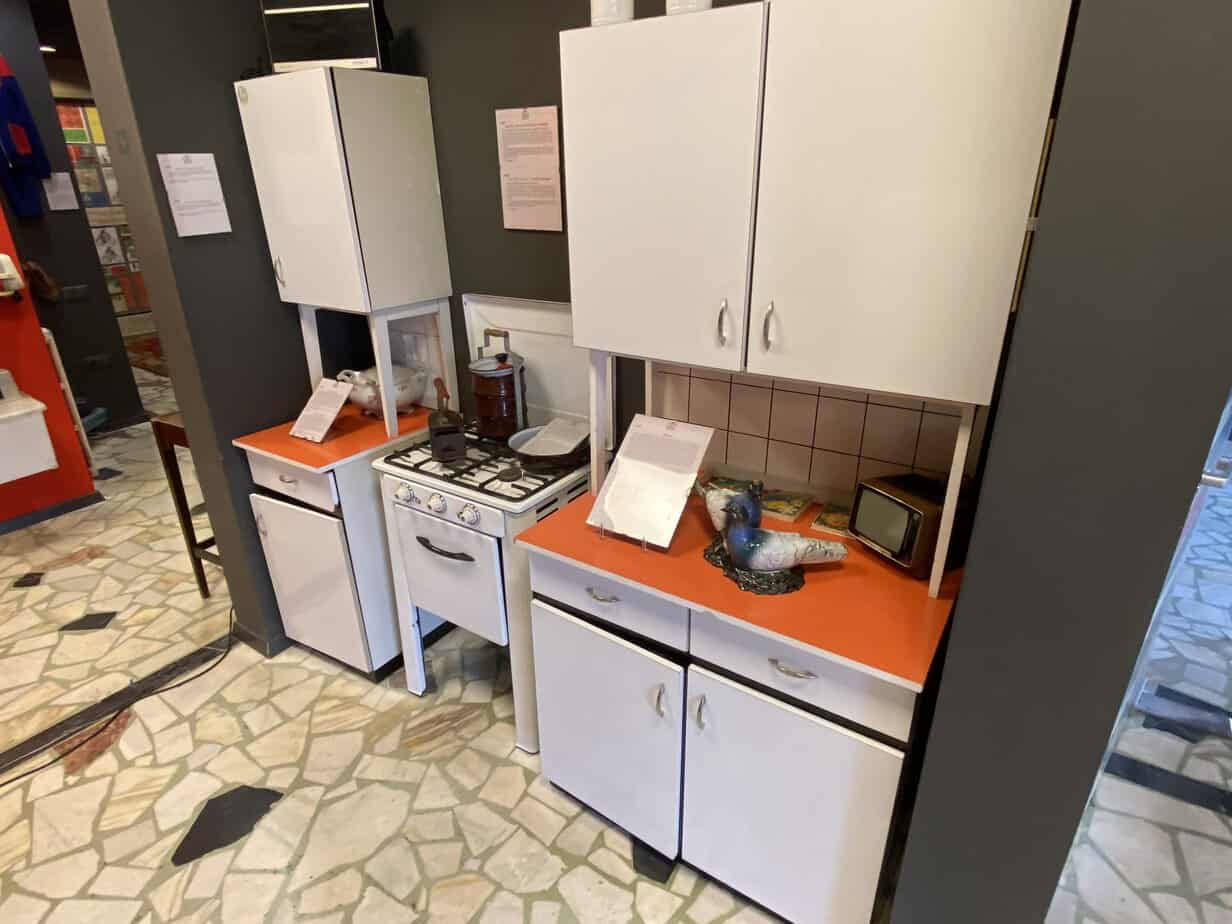
I especially liked the tiny submarine two Romanians designed to pedal underwater down the Mures River to the Danube and then the Black Sea to freedom. The revolution saved them from a terrifying journey.
Walls are covered with testimonies of Romanians’ horrifying experiences under communism. One woman talked about being hauled off to a police station for getting an abortion, strictly illegal under the Ceausescu regime, a ruling that led to the highest mortality rate for women in Europe.
“The feeling was similar to being taken to the slaughterhouse,” the woman said in the story.
Museum guide Cristina Voacu, 43, lived through communism in Brasov. While school children toured the museum, asking how people lived under communism without iPhones, she had her own horror stories of communism when she was a child.
“It was horrible,” she said. “It was cold. We had no electricity. No heat. No food.”
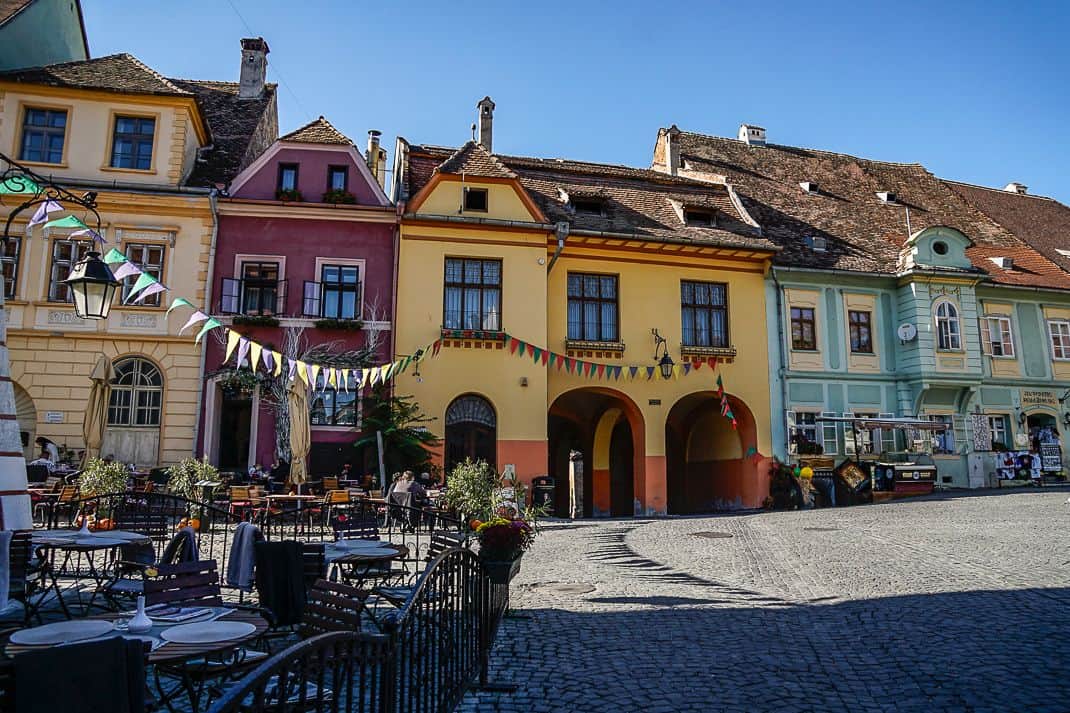
Sighișoara
Besides Bran Castle, Transylvania’s other alleged must-see sits 70 miles (117 kilometers) northwest of Brasov. Our bus passed through Transylvania’s lovely kaleidoscope of rural finery. Cornfields. A lake. Rolling green hills. Grazing cattle. Farmland growing wheat and oats.
We passed a horse-drawn carriage. A man sold wild mushrooms on the street not far from a small Romanian Orthodox shrine.
When we walked the 20 minutes from the Sighisoara bus station across a narrow river up to the town’s historical center, it was like walking into a Grimm’s Fairy Tale. High up on the hill, tall pointy spires stuck in the sky like a closet full of witches hats. They hovered over brightly colored buildings of green and maroon and orange and yellow.
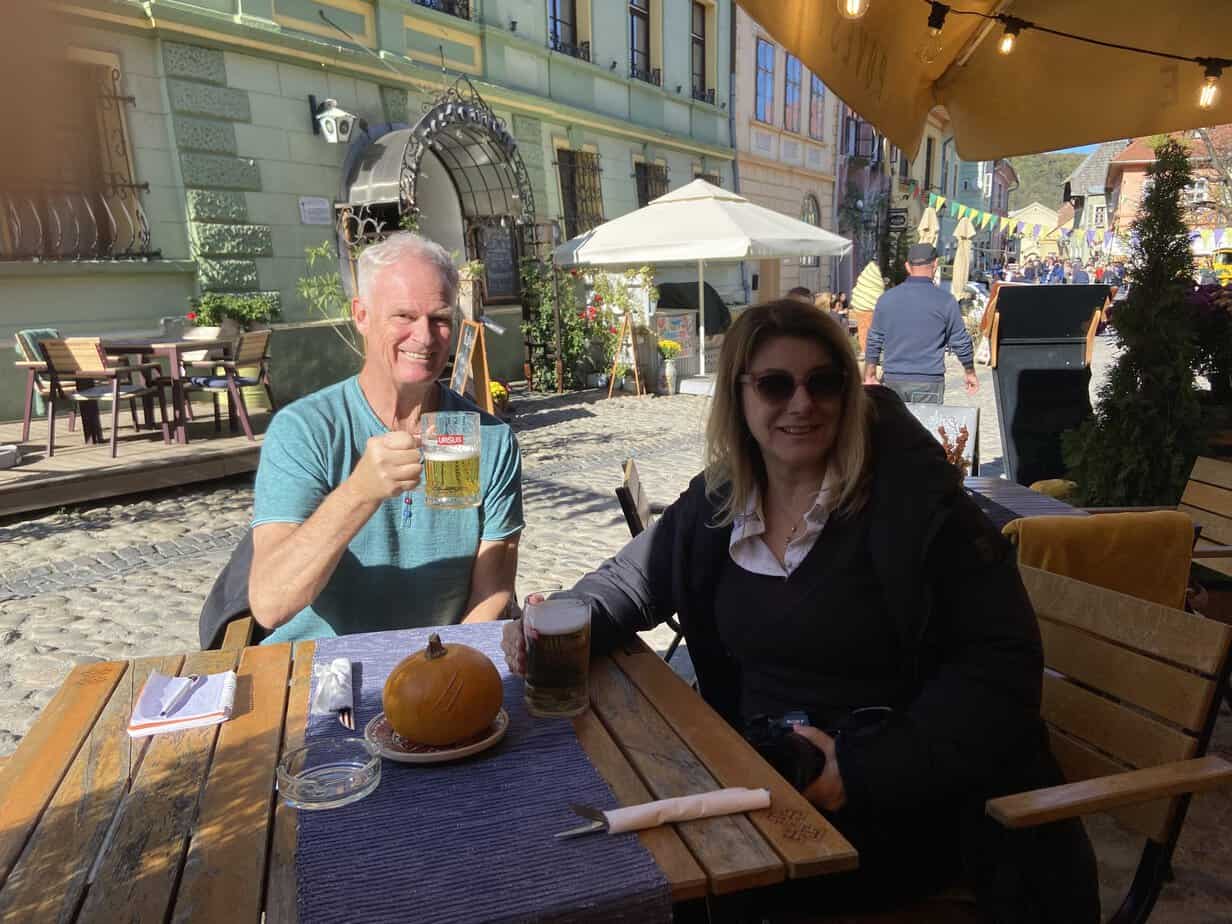
The spires go back to the 13th century. The ruling Magyars gave the resident Saxons this part of Transylvania to defend against the nasty Tartars. Over 200 years, local working guilds built 16 stone towers with red-turreted roofs. Nine remain.
From the river, Sighișoara looks majestic, something too cool to be authentic to be a real city but it is. However, when we reached the top and walked down the main drag past the steeples, my mood darkened. Lining both sides of the street and down every side street were souvenir shops.
That included a Dracula room. In fact, this is Vlad the Impaler’s hometown. The city of 24,000 even defiled his name by turning his house into a three-star restaurant and souvenir shop where you can get a nicely framed bat. I looked around for Dracula impersonators headed to work.
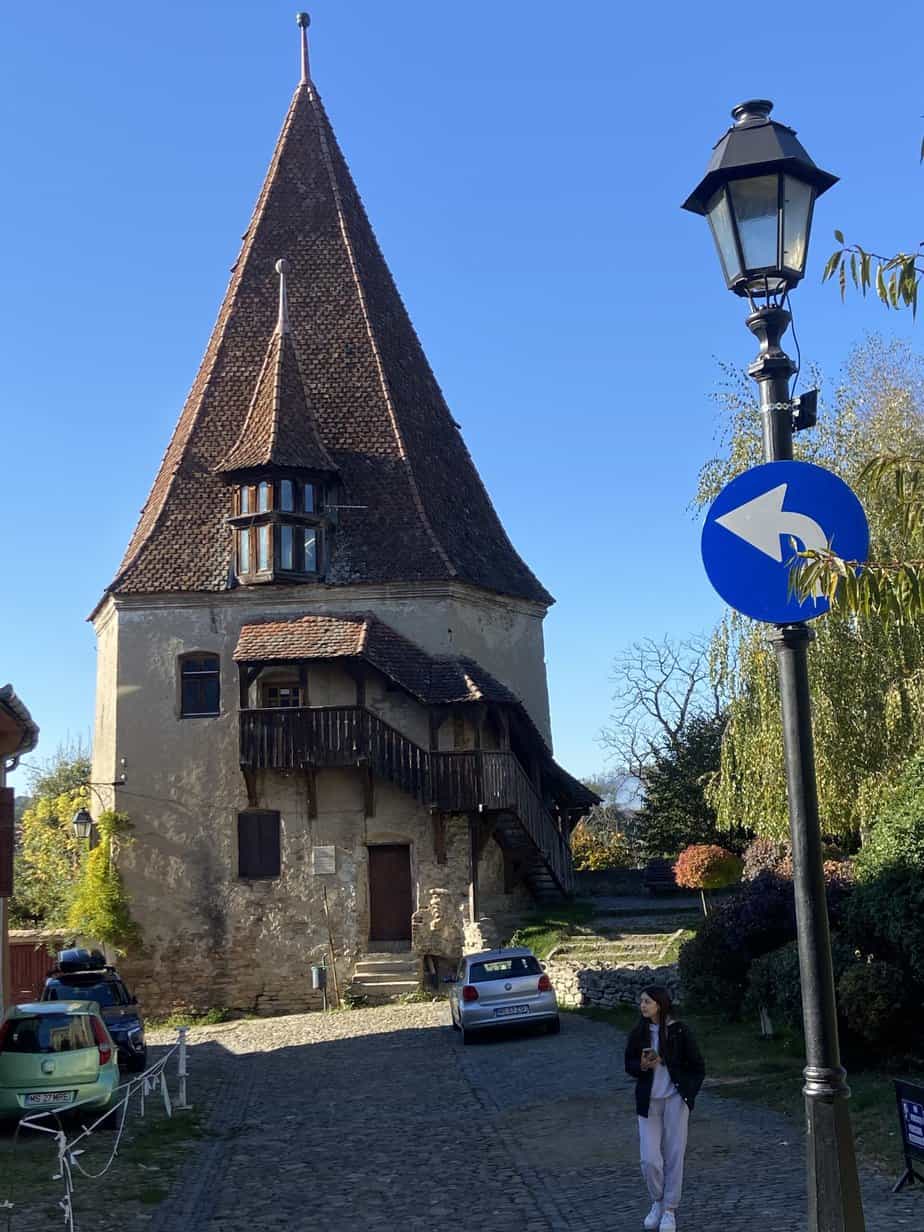
Even on a weekday in October, the place crawled with tourists. If you see it with the backdrop of history, Sighișoara is much more interesting. Defending its northern flank is the Bookmaker’s Tower, shaped like a witch’s hat complete with a creaking wooden staircase.
You could also sit at one of the too many outdoor tables and sip palinka, Romania’s killer brandy, and imagine ol’ Vlad wielding his sword not far away holding off the Ottomans 600 years ago. Or imagine Sighișoara at night, with the tourists gone and the steeples all alit, and bask in the glow of Transylvania romance.
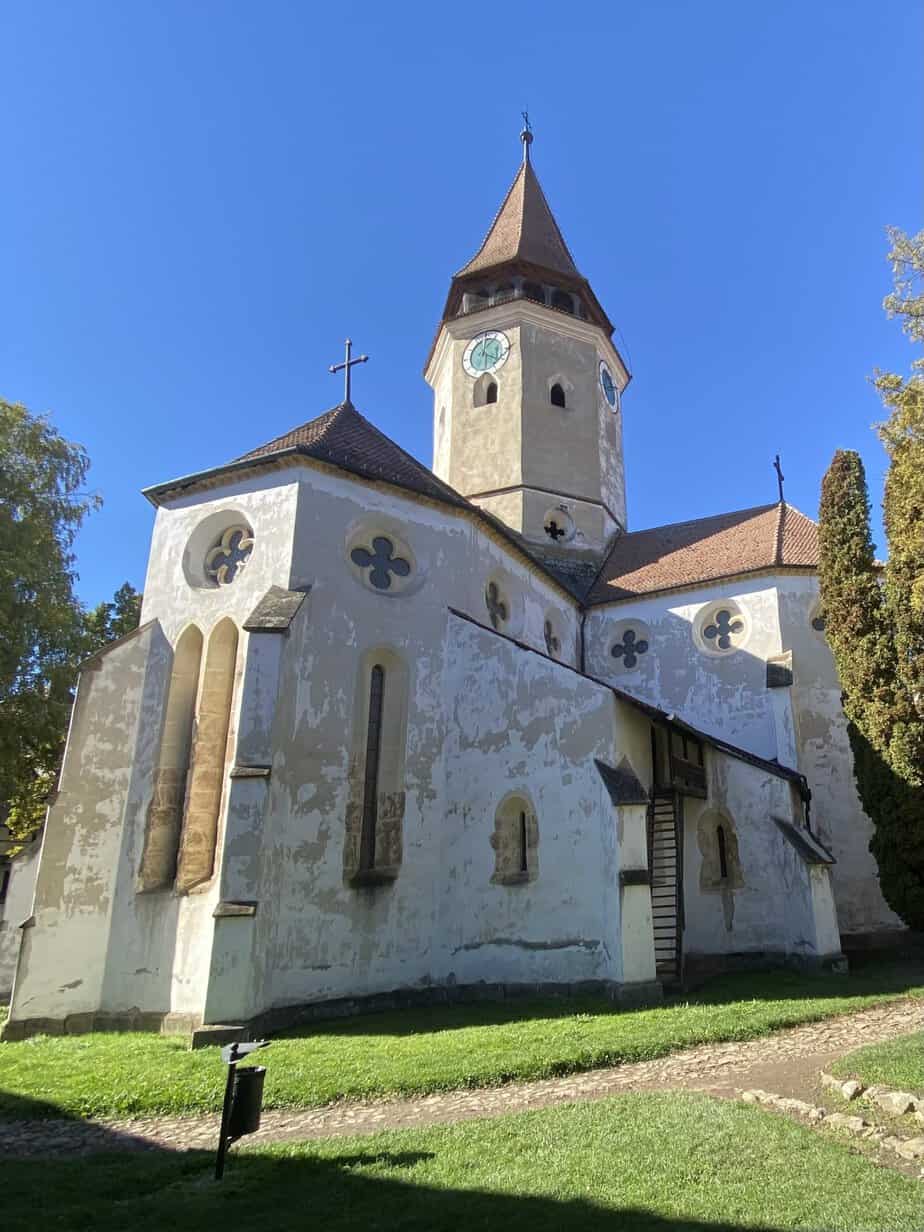
Prejmer
Wanting to wash myself clean of tourism run amok, I took a solo trip to a small town of 8,600 people just 12 miles northeast of Brasov. Prejmer has a small town square anchored by an odd sculpture of helmet-shaped rocks stacked atop each other over a monument dedicated to the town’s men who died during the two world wars.
Prejmer was perfect. It had no souvenir stands. I couldn’t even find a postcard. Its lone draw is the Prejmer Fortified Church, a UNESCO World Heritage Site. Built between 1211-1240, the Gothic church is the most formidable fortress in Transylvania with walls 4.5 meters thick.
I walked inside and past 270 store rooms used for hoarding food in case of sieges. Turreted towers line the upper walls topped by a giant iron cross. It was the area’s stronghold during the Ottomans’ first invasion in 1421.
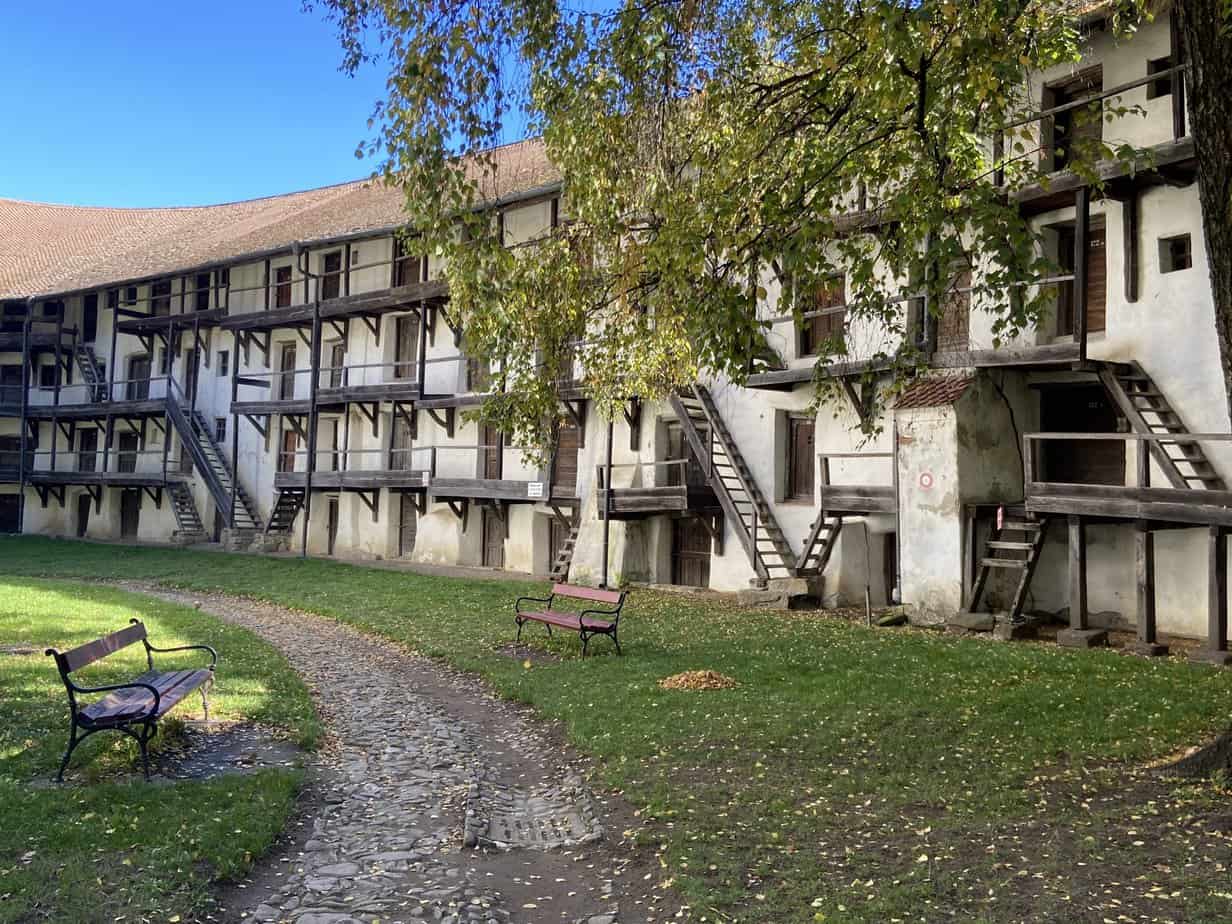
I heard the church bells gong and asked one of the two shopkeepers if people still worship here. Not many anymore, she said. The Christian church was frequented by Saxons who all left after communism did.
As I ate two giant slabs of chicken schnitzel and a big Timisoreana beer at a dive bar called Rustic Pizza, I thought of Transylvania on the world stage. It’s synonymous with Dracula but it should symbolize Transylvania’s rugged past. And, looking at the clean streets, fall colors and improved economy, maybe its future, too.

If you’re thinking of going …
How to get there: Trains leave hourly from Bucharest to Brasov. The 2 ½-hour journey is €15-€17.
Where to stay: Residence Hirscher, Strada Apollonia Hirscher 14, 40-368-401-212, https://hirscherresidence.com/, info@residence-hirscher.eu. Three-star hotel with nice rooms and helpful staff who have public transportation information. I paid €381 for four nights including breakfast.
Where to eat: La Ceaun, Plata Sfatului 11-12, Brasov, info@laceaun.com. Traditional Romanian fare such as pig’s knuckle and pork ribs with garlic sauce. I paid €40 for two.
When to go: As I tell everyone, avoid all of Europe in July and August. If Sighisoara is crowded in October, I don’t want to see it in summer. Brasov is at 500 meters elevation so it’s cooler than Bucharest. During our visit in October it was in the 40s and 50s.
For more information: Visit Brasov, 40-07-5467-6710, https://visit-brasov.ro/, szabi@visit-brasov.ro.
(Next Tuesday: Transnistria, the breakaway Russian republic.)


November 20, 2024 @ 12:07 pm
I loved Romania. We spent 3 weeks in Transylvania and found the people and the towns were lovely. We went in June and, while they were tourists, it was not as mobbed as other European destinations. Sighisoara should be an overnight stay, come 3PM the tourists clear out and you have the town to yourself. Also, Cluj is definitely worth a few days. It has a great small city vibe.
November 20, 2024 @ 2:28 pm
I heard good things about Cluj. I almost got an assignment to write about Timosoara when it was the European Capital of Culture last year but the NY Times didn’t go for it. It was a little out of the way for me to visit this time. Next time I’ll hit it and Cluj and get up into some of the hill tribes in Maramures. You should read “Along the Enchanted Way,” about an Englishman who spent 10 years with gypsies in Maramures in the 2000s.
John